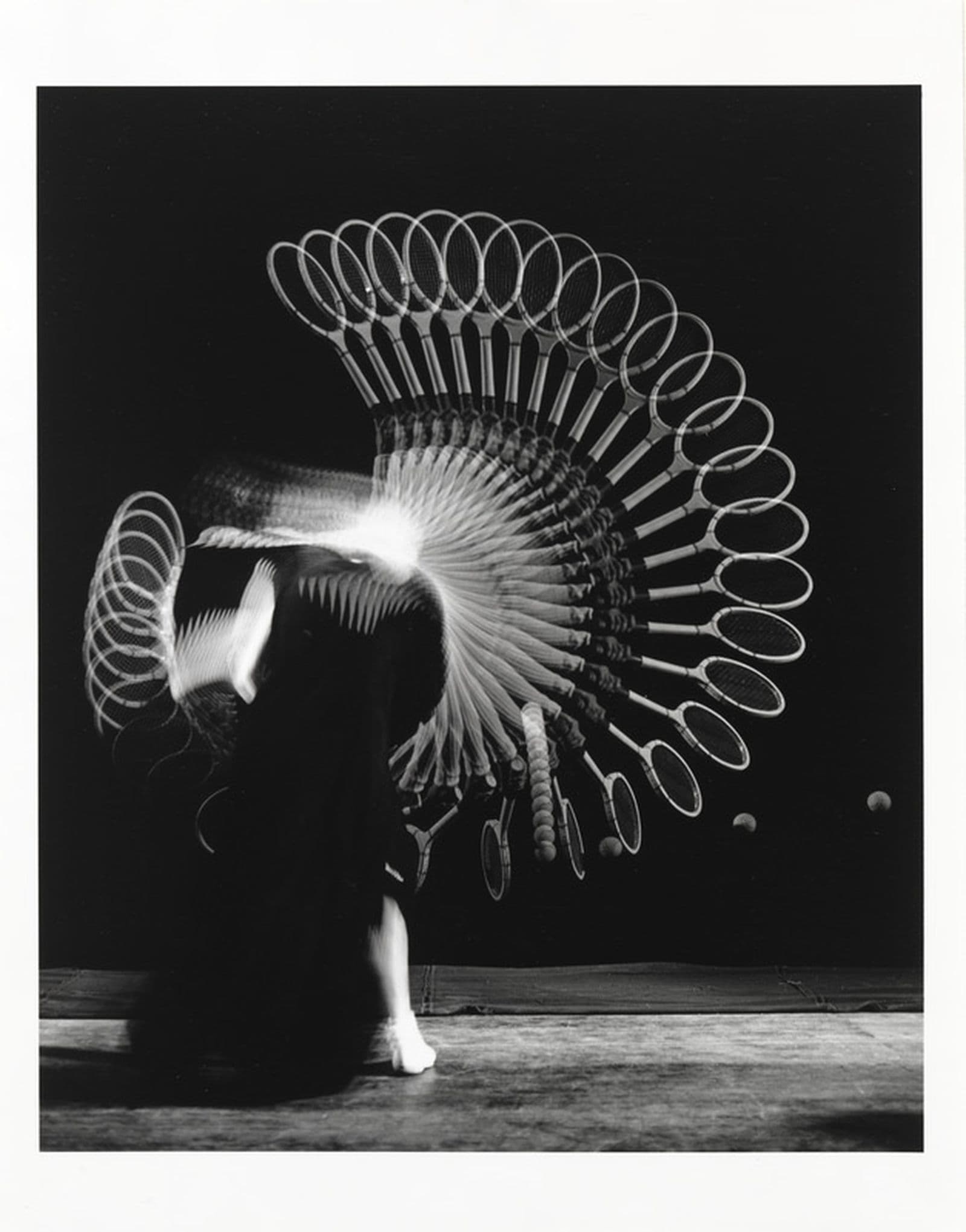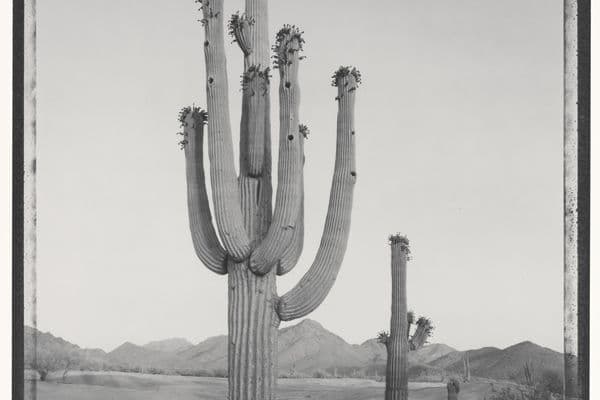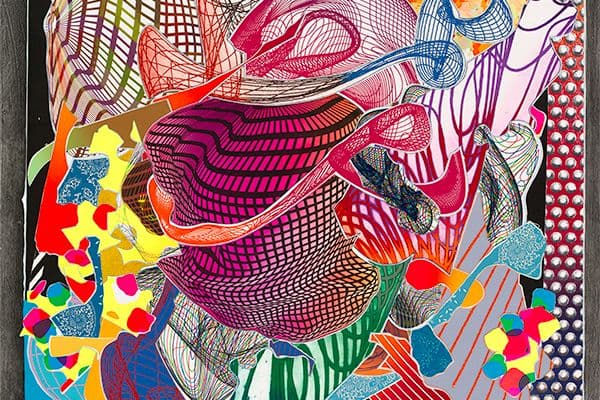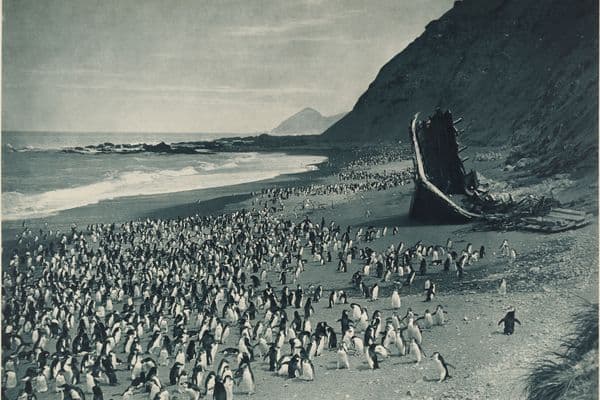In a Flash
Dr Harold E. Edgerton (1903–1990) & split-second photography
31 Oct 1998 – 14 Mar 1999

Harold Edgerton, Backhand, c. 1939, gift of the Harold and Esther Edgerton Family Foundation 1997
About
Dr Harold E. Edgerton (1903–1990) was the inventor and developer of modern flash photography which made possible the stop-action photography familiar today in daily newspaper and television sports reportage. When Edgerton first began publishing his spectacular flash and multi-flash photographs of ultra-fast moving figures and objects, motion sequences and collisions in the 1930's most visible movement could be captured on black and white film. His images were revolutionary and novel because they were taken with exposures between thousandths and up to one millionth of a second, and revealed more than the eye could see. Edgerton preferred to describe his photographic studies of fractions of time as 'events' and his work was scientific but the aesthetic quality of the resulting images also won him considerable acclaim. Among the best known of Edgerton's images is the 1957 colour study in which a splashing milk-drop forms a delicate glassy coronet; and one from 1964 in which a luscious apple is shown in the moment before it disintegrates after being pierced by a bullet.
Edgerton's seductive images are cultural artifacts for they also have a slapstick, festive air associated with the circus. His subject matter can be connected to cartoon art which developed rapidly through the 1930s and which was similarly full of frenetic speed and impossible leaps, jumps, runs and ecstatic but harmless violence.
Edgerton was aware of and indebted to his major predecessors in experiments with high-speed photography, especially the work of Eadweard Muybridge (1830–1904) who undertook a commission in 1872 to prove photographically that a horse's hooves were all off the ground at high gallop. In his later human and animal motion studies Muybridge revealed a world of immense grace and beauty in the simplest of actions. The sequential grid format Muybridge employed for his studies also had a considerable aesthetic influence on twentieth century art. A number of plates from Muybridge's publication Animal Locomotion (1885–1887) were included in In a Flash, as are photographs by Edgerton's contemporaries from the field of documentary art photography including; J.H. Lartigue (1894–1986) who recorded his family's passion for racing cars and flying, and Henri Cartier-Bresson (b.1908) who defined a photographic philosophy of capturing human interaction in 'decisive' moments.
Dr. Edgerton grew up in Nebraska and studied electrical engineering at the State University, then completed his post-graduate studies at the famed Massachusetts Institute of Technology (MIT) in Boston. He taught full-time at MIT from 1927–1968 but also continued as Emeritus Institute Professor until his death in 1990. Edgerton also developed other sonar imaging systems, and a centre at MIT in his name now continues his work into the future.
In a Flash: Dr Harold E. Edgerton (1903–1990) and spilt-second photography, curated by Gael Newton, was mounted to mark the generous gift from the Harold and Esther Edgerton Family Foundation of 42 photographs to the National Gallery of Australia in 1997.
This exhibition was sponsored by Nikon through Maxwell Optical Industries, Sydney.











